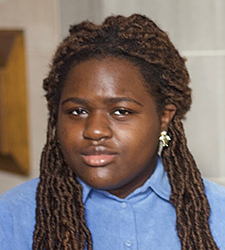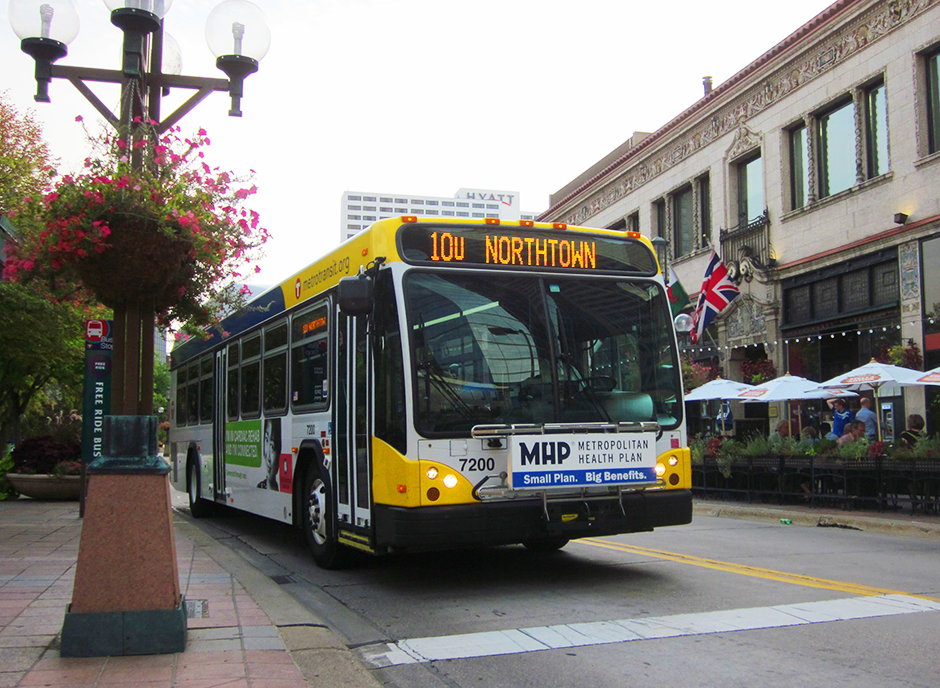Rooted in the Twin Cities since my first breath, I’ve been voyaging the expansive metropolitan area on Metro Transit my whole life.
Like so many kids, “no” was the only word in my vocabulary as a toddler. But, with my fingers interlocked with my mother’s, I discovered the word “yes” scattered across the pavement as we hustled to our bus stop in Brooklyn Park. Later, as a chronically online teen who envied those delighting in the spots of Minneapolis and St. Paul, I followed them by jumping from bus to light rail to sidewalks to another bus.
Entering the bus, my ears tune into the various conversations, some in my native tongue and others not. I scooch over to leave an empty seat for a stranger, or a friend you randomly encountered or just made. Transit allows us to foster a community, to connect with others we might never interact with outside of that collective movement. From those who just finished a work shift to those who are about to start one, from those who are going to a Vikings game to those who are heading to the grocery store, transit encompasses the cultural and social landscape of the Twin Cities.
At its best, transit is a vibrant and practical arena where our cultures are visible to each other. It’s a way to save money, protect our climate, and make our communities more connected. And, now, thanks to historic investments from the state legislature, we have the opportunity – and the obligation – to tap the full potential of transit in the Twin Cities.
This session, state lawmakers passed a transportation bill that will raise new revenue to close Metro Transit’s operating gap and electrify the fleet so it can transition to renewable energy. For less than a penny on the dollar, we’ll have buses and trains that come every five to ten minutes, and the capacity to build out a robust bus rapid transit network that includes suburb-to-suburb transportation. We now have the funding for a transit ambassador program to make our rides inclusive and safe for everyone, and an eliminated fares pilot program on two high-traffic lines.
But money alone isn’t enough. To turn those resources into quick action and lasting change, we need strong, visionary leadership at the regional level. Right now, the Metropolitan Council is filling key positions – including the Metro Transit general manager and regional administrator. It will be up to them to inspire staff, infuse the agency with a sense of possibility, and act with the level of urgency and innovation needed to meet the needs of our people and our climate.
It won’t be a quick or easy task. Because of decades of disinvestment, our system is disconnected. Because of infrequent bus and train schedules a 20-minute car trip can take an hour and a half on transit. Even people like me, who want to take transit, are driven to car ownership to have access to the mobility we need to get to jobs and make our lives work.
Though my mom was the one who introduced me to the bus, her goal was always to get a driver’s license and purchase a car. With two jobs and two kids, it was simply too time-consuming and stressful to rely on transit. I soon learned that lesson myself. In high school, I worked at Dick’s Sporting Goods in Maple Grove – a 13-minute drive from my home in Brooklyn Park. But without a car, that trip turned into a two-hour bus ride with three transfers and a 20 minute walk at the end. I needed to purchase a vehicle in order to freely move, otherwise I would’ve been stuck in Brooklyn Park, with no easily accessible job in sight.

[image_caption]Grace Bassekle[/image_caption]
Decades of underinvestment in our transit system has given me and my family no real choices, no real freedom. Now we have the financial resources to change that.
For our future, for our freedom, for our collective prosperity, we need Metropolitan Council Chair Charlie Zelle, members of the Metropolitan Council and Gov. Tim Walz to appoint leaders who will rapidly deliver an outstanding transit system that works for everyone. Let’s make sure every little kid has the chance to fall in love with the cities, one bus ride at a time, like I did.
Grace Bassekle is a transit legislative intern at Move Minnesota. She is a community organizer who is passionate about the intersectionality of climate justice through a different lens.






Such delays are not merely due to scheduling, they’re also a consequence of notions such as routing an LRT train–purported to be a central artery of the metropolitan transit system–as if it were a streetcar. In this case I’m thinking of the Green Line.
“From those who just finished a work shift to those who are about to start one, from those who are going to a Vikings game to those who are heading to the grocery store, transit encompasses the cultural and social landscape of the Twin Cities.”
Apparently Grace Bassekle has never ridden on the number five bus. Because she omitted a large swath of “the cultural and social landscape of the Twin Cities.” I rode it to work and back for 25 years and my goodness! The things I saw and heard…
I 100% support transit improvements, but realistically riding a bicycle and hoping for a mild winter is the best way to live in the Twin Cities without being car dependent. Thank goodness next winter will be an El Niño year.
“I worked at Dick’s Sporting Goods in Maple Grove – a 13-minute drive from my home in Brooklyn Park. But without a car, that trip turned into a two-hour bus ride with three transfers and a 20 minute walk at the end.”
I think this reality, true for so many people, eludes the opponents of transit. If you have a car and a job, it’s easy to wonder why anyone rides the bus. But if you don’t have a car, it’s hard to get the job to buy one….
Not to burst anyone’s bubble , but the first thing the Met Council will attempt is to use the seven county transit to pay off the Hennepin county disaster …. also known as the SWLR that is $750 million over budget. Next is to fund the current systems operating costs ….. which are $100’s of millions more than its fare revenues on an annual basis.
Then there’s the train to Duluth. Although no one knows who how much will be needed to subsidize it annually.
The more they build , the more the transit tax will be needed just to fund annual operating losses.
“The more they build , the more the transit tax will be needed just to fund annual operating losses.”
Can you point to an infrastructure project that operates at a profit? Freeways, bridges & highways don’t pay for themselves either; why the new standard for public transit?
The issue isn’t a profit it’s about what contributes. Gas tax , motor vehicle registration and motor vehicle sales taxes contributes billions of dollars annually to infrastructure and transit.
A significant amount of Metro Transits annual operating loss is paid for by the motor vehicle sales tax.
What does mass transit contribute to its cost ? Fare revenue contributes less than 20% of operating costs.
We’re now creating a sales tax to fund a system that cannot generate anywhere near what it costs to operate much less develop it.
While some mass transit is necessary the issue is how much can we afford or how will it pay for more of its own cost. The more we build doesn’t necessarily translate into increased ridership or a willingness to pay more ( or pay at all) to use it.
You gotta love the Lefties infatuation with Big Government. If the MET Council could fix it, they probably would have already. For a mere couple hundred million they will come up with a solution that will have to be undone in 3-4 years to fix the current problem along with a couple more issues caused by this fix!
I also took the bus everywhere when younger and it was slow going–the 16 from Minneapolis to St. Paul, with a stop at about every block and then there was the 21. The 6, not so bad. However, if you look at the new pending SWLRT, it makes many stops and will not save time. I would not put my faith in the leadership with the met council. I also can’t help but noticing the great express bus service that many of the suburbs have, why can’t that be copied in the city?
Grace Bessekle, this is an excellent piece! You describe intersectionality from experience and in a way that’s immediately understood, through concrete examples. And you make a strong case for greater responsiveness and reliability in our transit system – economic stability, environmental health, human health, and social justice are all served by a robust transit system. Brava!
Chevrolet advertisement from the 1979’s.
“It’s not just your its your freedom. ”
That is so many people are against the automobile.